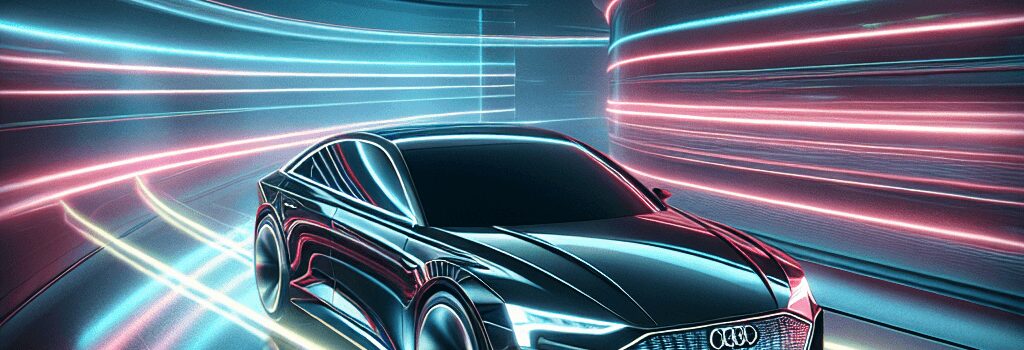2025 Audi RS e-tron GT: Enhanced Performance and Efficiency Take Electric Luxury to New Heights

The latest refresh of Audi’s iconic four-door electric sedan, the RS e-tron GT, is more than a cosmetic update. While the exterior retains its signature Audi styling, the 2025 model unveils a host of under-the-hood improvements which include a dramatically upgraded powertrain, a reengineered battery system, and enhanced driving dynamics that continue to demonstrate why it still drives like a true Audi.
Engineering Marvel: New Motors and Battery Innovations
Audi has implemented significant technical enhancements under the skin. The new front electric motor benefits from revised electronics and a pulse inverter that refines torque delivery. The rear motor has seen an upgrade featuring a higher density of copper windings and a 10 kg weight reduction, contributing to improved efficiency. These changes allow the 2025 RS e-tron GT to access up to 912 hp (680 kW) in launch mode, while the nominal power rating sits at around 750 hp (560 kW), offering a 113 hp improvement over last year’s iteration.
The battery pack has also been completely rethought. A new 105 kWh (gross, with 97 kWh usable) unit not only increases range by an impressive 51 miles to a total of 300 miles (482 km) on a single charge, but also supports a revised battery chemistry with a tweaked nickel:manganese:cobalt ratio. Enhancements in the 800 V architecture and cooling system mean the optimum charging temperature has been reduced from 95° C to 59° C, and the pack itself is 11 kg lighter. This upgrade allows DC fast-charging at up to 320 kW, slashing the 10–80% charge time down to just 18 minutes.
Enhanced Dynamics and Intelligent Drive Modes
The 2025 RS e-tron GT now comes with updated driving dynamics, including improved regenerative braking capabilities. The system can harvest up to 400 kW under braking at loads reaching 0.45 G, compared to the previous 290 kW at 0.38 G. By increasing the regen ratio when lifting off the accelerator (now up to 0.13 G from 0.06 G), Audi ensures energy recovery is maximized while adapting to various driving scenarios. For additional control, drivers can toggle the regenerative braking using steering wheel-mounted paddle controls.
The interior also features technical upgrades. A new multifunction steering wheel hosts bright red buttons enabling a 10-second performance boost and mode toggling between customizable RS and performance settings. Options also include premium Nappa leather, forged carbon fiber trim (an $8,400 add-on despite being less complex to manufacture than woven counterparts), and a selection between glass and all-carbon fiber roofs. The active suspension system, available in the Dynamic Plus package for an extra $11,000, further refines handling by adjusting suspension geometry to counteract weight transfer, ensuring a remarkably smooth ride even at rapid acceleration or during sharp cornering.
Deep Dive: Technical Innovations and Market Impact
The technical innovations in the RS e-tron GT not only push the boundaries of electric performance but also set new benchmarks in efficiency and driving precision. The reengineered 800 V battery system is particularly significant; reducing the thermal threshold for fast charging dramatically decreases downtime—a key competitive advantage as charging networks expand. Expert voices in EV technology note that such improvements could herald a broader industry shift, encouraging other manufacturer to adopt similar materials science innovations and electronic control strategies.
- Battery Chemistry: The updated ratio of nickel, manganese, and cobalt reduces degradation rates while maintaining high energy density.
- Cooling Efficiency: Enhanced cooling mechanisms allow for lower operational temperatures, which not only speeds up charging but also prolongs battery life.
- Electronic Control: Improved pulse inverters and customized drive modes show Audi’s commitment to marrying digital control with traditional mechanical reliability.
Competitive Analysis: Where Does the RS e-tron GT Stand?
In a market where the Porsche Taycan and similar high-performance EVs are fiercely competitive, the RS e-tron GT distinguishes itself with its comprehensive engineering updates. The performance numbers are particularly noteworthy: a 0–60 mph sprint in approximately 2.4 seconds, with some tests recording as low as 2.1 seconds, places it in the upper echelons of electric performance sedans. While Porsche’s badge carries a distinct allure for some enthusiasts, Audi’s focus on technological integration—from regenerative braking to active suspension—offers a compelling alternative to buyers unwilling to compromise on the driving experience.
Additionally, the car’s refined interior and sophisticated electronic systems make it a standout in terms of both luxury and performance.
Future Prospects and Charging Infrastructure Considerations
As the EV market continues to expand, the RS e-tron GT’s advancements in fast-charging and battery efficiency are timely. Industry experts point out that reducing charging times directly addresses one of the lingering challenges facing electric vehicles. With charging networks continually improving, models like the RS e-tron GT are well positioned to attract customers who demand both high performance and practical range for long-distance travel.
The evolution of components such as high-power inverters and next-generation battery cells not only enhances current models but also sets a precedent for future EV designs. Audi’s commitment to incremental yet meaningful upgrades reaffirms the brand’s dedication to innovation in a rapidly transforming automotive landscape.
Conclusion
The 2025 Audi RS e-tron GT is a technical tour de force that blends aesthetic refinements with noteworthy engineering advancements. From upgraded motors and battery chemistry to intelligent suspension dynamics, this model offers an unparalleled level of performance while still delivering the luxurious and composed driving character synonymous with Audi. As competition heats up in the EV market, this latest iteration could very well be the benchmark that defines the next generation of high-performance electric vehicles.
Source: Ars Technica